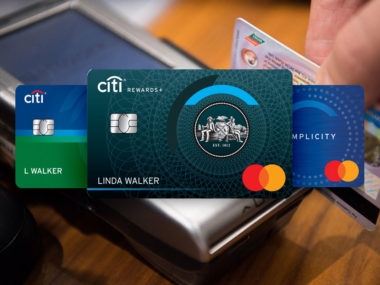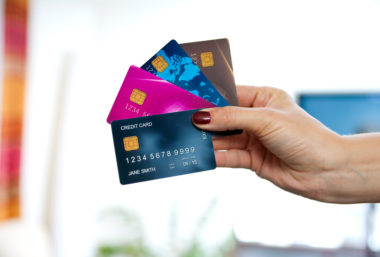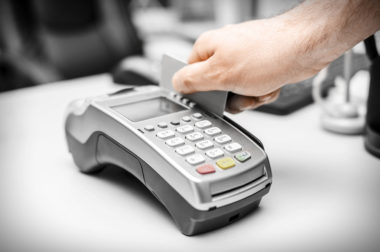
In dire financial situations, using your credit card to get a cash advance can be a tempting proposition. A cash advance is a short-term cash loan that is taken against your credit card line. Typically, card users can use an automated teller machine (ATM) to pull cash from their credit line.
However, if you don’t have your personal identification number (PIN), you won’t be able to make a withdrawal from an ATM. While PINs are designed to protect consumers, they can pose an issue in these situations. Fortunately, there are ways to get a cash advance from a credit card with no PIN.
Table of Contents
Visit the Issuer Bank or an In-Network ATM
If you need to make a cash withdrawal but don’t have the card PIN, you should head to a bank affiliated with the card issuer. You must bring your photo ID or a passport and work with a cashier or teller to receive your advance without a PIN. Since most consumers don’t make the effort to memorize the four-digit number, this is the most common method of requesting a credit card cash advance.
Alternatively, you may have some luck by using an in-network ATM. Not only can staying in your bank’s network save you some cash by avoiding fees, but you’ll likely only be able to get cash from your credit card at in-network machines.
Most ATM transactions require a PIN, but depending on your card issuer’s policies, you may be able to get an advance without entering it. It’s wise to contact your card issuer to confirm if this is an option before making the trip.
Use a Prepaid Card
Another option to make cash advances from a card is prepaid cards. Prepaid cards are different than secured credit cards. All you need to do is load cash onto the card, then use the balance for purchases — no banks required. Because of this, prepaid cards are essentially debit cards.
While this doesn’t truly involve using credit, prepaid cards are highly convenient and enable you to make withdrawals from ATMs at your convenience. This is a great way of setting and sticking to a budget.
However, some prepaid card providers have additional or hidden fees that can put some strain on your bottom line. Carefully research the card provider before putting your hard-earned cash on a prepaid card.
Use a Debit Card Instead
You should first assess whether you have the money available to simply withdraw it from your bank account via debit transaction, rather than taking out what amounts to a high-interest loan.
If you have money in your bank account, avoid getting cash with a credit card. Using your debit card to withdraw money directly from your account is a smarter choice.
Even if you need money immediately, and an in-network ATM isn’t nearby, it is wiser to use a debit card at an out-of-network ATM than take a cash advance on a credit card.
Although the debit transaction could cost up to $5, credit card cash advances cost up to 8% of the cash amount and may come with an additional fee of $5 or $10. What’s worse, you’ll end up spending even more if you go into credit card debt.
Request a PIN From Your Issuer
Unless you use one of the approaches listed above, you’ll need a PIN to get a cash advance. If you don’t have a PIN, you can request for one to be added to an existing credit account.
If you want to do so, first review the card company’s cash withdrawal policies (if they are indeed an option). This will let you know about any associated fees and enable you to make an informed decision.
You can request a PIN through a phone call, via mail, and in some cases, online. You’ll need to wait a few days to receive your PIN, but some providers may give you a temporary PIN so that you can immediately begin making cash withdrawals.
Take special care not to lose your PIN once you receive it; keep it in a safe place in case you need to refer back to it. If you do lose it, you’ll need to apply for a new one and wait to receive any cash advance.
Alternatives to Cash Advances
Before you get a cash advance, take a moment to consider your alternatives. There are other options for receiving money during a financial crisis, and the costs associated with credit card cash advances can often compound your debt problems.
The average interest rate on a new credit card is 22% if you have a decent credit score, which is higher than the other financing options available, such as:
- A personal loan, which has an interest rate of 16%;
- Home equity line of credit (HELOC);
- Lines of credit, with which you only pay interest on the amount you draw.
Additionally, there are alternatives that don’t involve credit. These options include:
- Shift bills around to free up more money;
- Find a friend who uses cash;
- Sell your stuff online to make more money;
- Borrow money through an overdraft facility, which you must pay back within a certain timeframe;
- Get a side hustle.
Furthermore, depending on the terms of your credit card agreement, you can expect to pay an extra fee for the privilege of withdrawing cash. Research these terms thoroughly before taking the plunge.
With care and forethought, you can overcome any financial crisis. Credit card cash advances can help you overcome temporary obstacles, but you shouldn’t rely on them excessively.
Don’t put yourself into a financial situation that will burden you with an insurmountable level of debt. By setting and following a budget, you can avoid becoming a part of the credit card debt epidemic, even after taking on additional debt via a cash advance.




